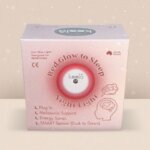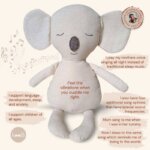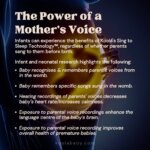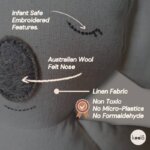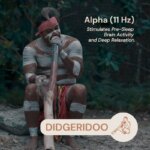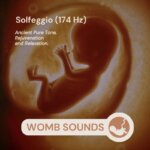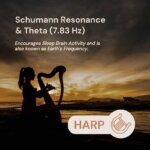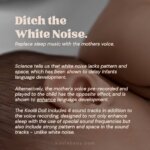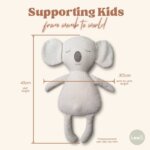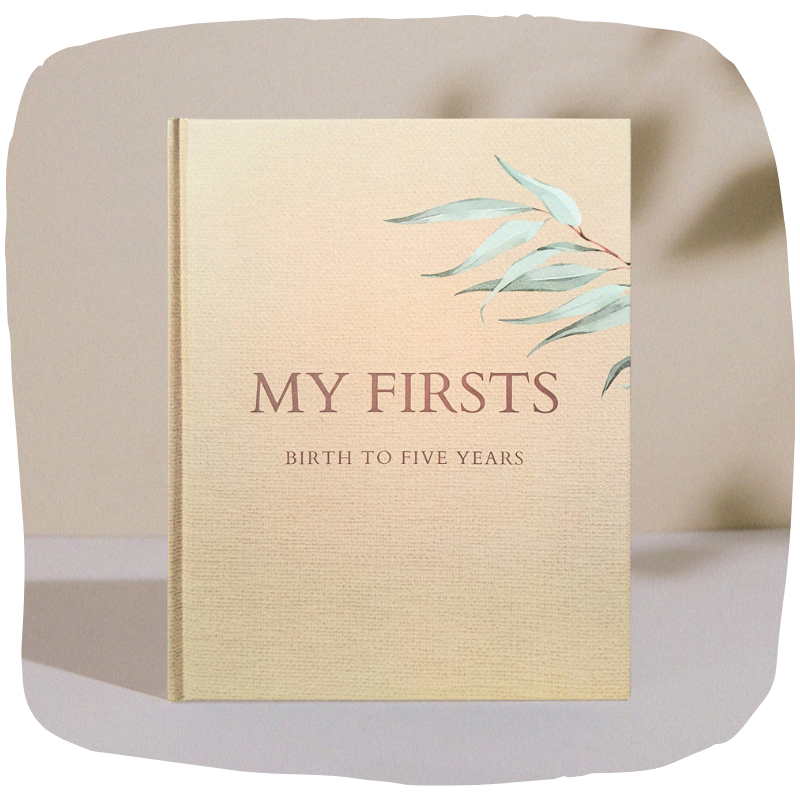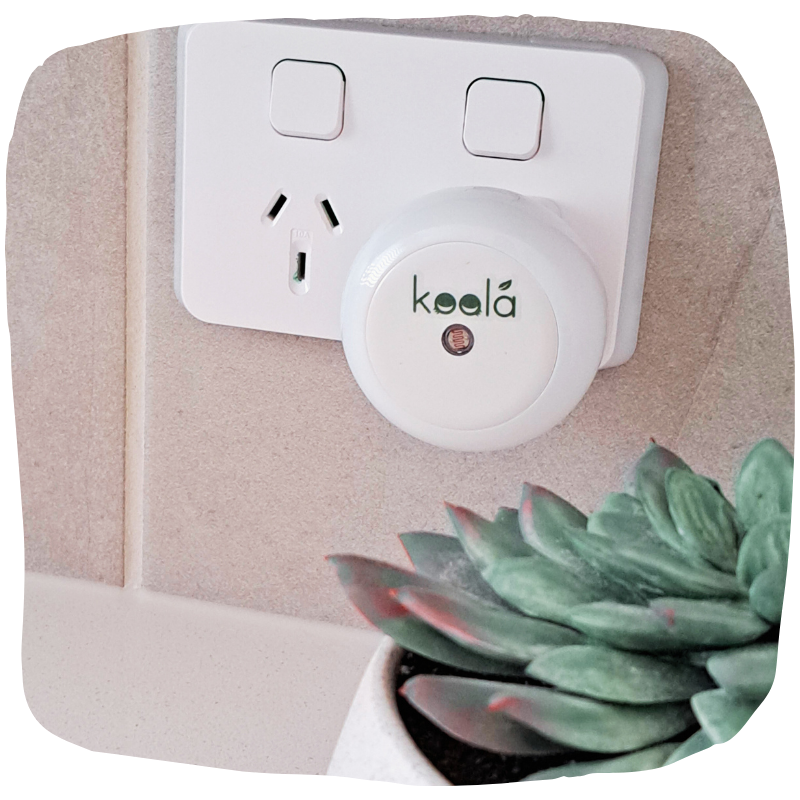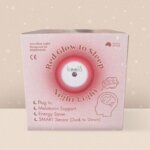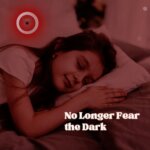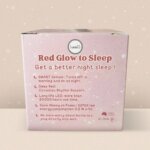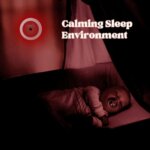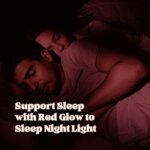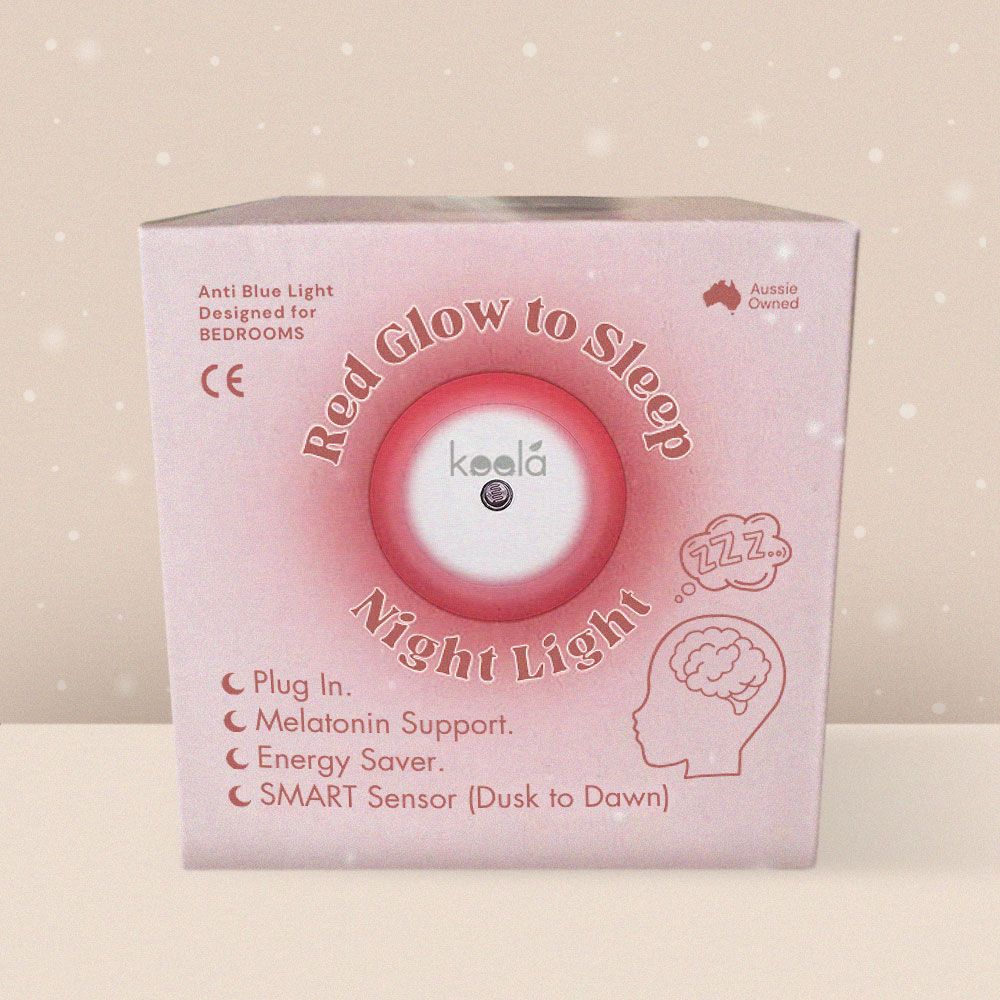The History of Sound Therapy: Ancient Roots and Modern Applications.
For centuries, various cultures have used sound and music as a tool for healing and spiritual growth. From the shamanic chants of indigenous tribes to the mantras of Hinduism and Buddhism, sound has been recognised as a powerful medium for affecting the human mind and body. Today, there is a growing interest in exploring the potential of sound frequencies as a healing modality.
If you want to find the secrets of the universe, think in terms of energy, frequency, and vibration.
- Nikola Tesla

Proponents of sound therapy believe that specific frequencies can help to balance and restore the body’s natural rhythms, promoting physical and emotional well-being.
Evidence-Based Sound Therapy: Examining the Research Behind Frequency Healing.
The information presented merely scratches the surface of this topic, and a vast amount of knowledge exists that can be explored to gain a more comprehensive understanding. Despite the abundance of scientific literature supporting the effectiveness of certain ancient healing frequencies, mainstream perspectives often disregard this sound therapy as pseudoscience.
Given the extensive research on 528 Hz among the Solfeggio frequencies and the highly favorable results, further investigation into the remaining frequencies is warranted due to their potential significance. This article aims to encourage readers to explore the science behind these frequencies, and to keep an open mind to the possibility of these frequencies offering a valuable approach to holistic healing.
Sound will be the medicine of the future.
- Edgar Cayce
While there is still much to be discovered about the science behind sound therapy, recent research has provided some intriguing insights into the potential of sound frequencies for healing. In this article, we will explore the history and contemporary practice of sound therapy, focusing particularly on the ancient healing frequencies known as the Solfeggio frequencies, most notably the 528 Hz frequency. We will examine the evidence behind the claims made about these frequencies and consider their potential applications in modern healthcare.
The 528 Hz frequency is known as the “miracle or love” frequency and is one of the nine solfeggio frequencies. It is said to have the power to heal DNA and has been used in sound therapy for this purpose (Sukovich, 2018).
Watch: The Sacred Secrets of SOUND
Everything connects to everything else.
- Leonardo da Vinci

A study titled: “Effect of 528 Hz Music on the Endocrine System and Autonomic Nervous System” Found that exposure to 528 Hz music had a positive effect on the endocrine system and autonomic nervous system. Specifically, the researchers observed a significant increase in salivary cortisol levels and immunoglobulin A levels in the subjects after listening to 528 Hz music compared to 440 Hz music. They also found that 528 Hz music resulted in a decrease in sympathetic nervous system activity and an increase in parasympathetic nervous system activity, as indicated by changes in heart rate variability (Akimoto et al., 2018).
The study's abstract reads:
This study examined the stress-reducing effect on the endocrine system and the autonomic nervous system of music with a frequency of 528 Hz, which has recently attracted attention as a “healing” type of music. Nine healthy participants (one man and eight women, aged 26 – 37 years) listened to 528 Hz and standard 440 Hz music on separate days. We measured salivary biomarkers of stress (cortisol, chromogranin A, and oxytocin) before and after exposure to music, and continuously recorded the activity of the autonomic nervous system. The Profile of Mood State, 2nd edition, was also administered as a subjective indicator of stress. In the 528 Hz condition, mean levels of cortisol significantly decreased, chromogranin A tended to decrease, and oxytocin significantly increased after music exposure. However, no significant change was observed in any salivary biomarkers in the 440 Hz condition. The ratio of low frequency to high frequency autonomic nervous system activity significantly decreased after exposure to both types of music, and the coefficient of variation of R-R intervals also significantly decreased, but only after exposure to 528 Hz music. Tension-anxiety and Total Mood Disturbance scores were significantly reduced after exposure to 528 Hz music, while there was no significant difference following 440 Hz music. These results suggest that the influence of music on the autonomic nervous system and endocrine system varies depending on the frequency of the music, and furthermore, that 528 Hz music has an especially strong stress-reducing effect, even following only five minutes of exposure.

Authors: Kaho Akimoto¹, Ailing Hu², Takuji Yamaguchi², Hiroyuki Kobayashi¹,²
¹Department of Hospital Administration, Graduate School of Medicine, Juntendo University, Tokyo, Japan.
²Center for Advanced Kampo Medicine and Clinical Research, Graduate School of Medicine, Juntendo University, Tokyo, Japan.
What is 440 Hz Music?
440 Hz is commonly used as the standard tuning frequency for Western music. Using this system, A4 at 440 Hz would be the reference point for tuning all other notes in the Western musical scale, and each note above A4 would have a progressively higher frequency. For example, the next A note up the scale, A5, would have a frequency of 880 Hz (twice the frequency of A4) and increase to higher frequencies and so on.
What is 528 Hz Music?
528 Hz music is composed of different notes and frequencies that create a melody. However, the fundamental frequency of the music is set to 528 Hz, which is the base tone that all other notes are tuned to. So, in a sense, 528 Hz is the “anchor” frequency of the music, and all other notes and frequencies in the composition are harmonically related to it.
Utilising Solfeggio 528 Hz for the creation of the Koolá™ Doll.
The Koolá™ Doll utilises the previously mentioned method and this exact frequency as a “carrier frequency” for all four of our music soundtracks. We use the 528 Hz frequency to carry a specific frequency through each soundtrack. Each track is different. For example our Harp soundtrack uses the 528 Hz sound waves to carry the 7.83 Hz isochronic tones in a “piggyback” style method through the music. This adds an extra dimension of relaxation for the listener as 7.83 Hz is the frequency of the Earth also known as the Schumann’s Resonance. The Schumann Resonance is said to have many beneficial properties for human health. If you are interested to learn more about the Schumann Resonance, look into the research conducted on “Grounding”. 7.83 Hertz also falls into THETA wave “sleep” category which can stimulate deep relaxation and sleep.
With our soundtracks you are not only exposed to the benefits of the 528 frequency you are experiencing the benefits of the additional isochronic tone. Read about all four of the sleep sound tracks and the specific isochronic tones.
The day science begins to study non-physical phenomena, it will make more progress in one decade than in all the previous centuries of its existence.
- Nikola Tesla

Ancient cultures such as the Egyptians, Greeks, and Chinese used sound therapy for healing purposes and was used in medical practices. They believed that sound had the power to heal the body, mind, and spirit (Jiang, 2018) & (Fauble, 2016).
Solfeggio frequencies are a set of tone frequencies that were used in ancient Gregorian chants and rediscovered by Dr. Joseph Puleo in the 1970s. These frequencies are said to have healing properties and are used in sound therapy (Gibson & Barden, 2013) & (Clement, 2019).
The Nine Solfeggio Frequencies.

Nine Solfeggio Frequencies List:
- 174 Hz: Foundation of Consciousness.
- 285 Hz: Quantum Cognition.
- 396 Hz: Liberation from Fear and Guilt.
- 417 Hz: Facilitating Change.
- 528 Hz: Transformation and Miracles. (Often referred to as the "love frequency")
- 639 Hz: Connecting/Relationships.
- 741 Hz: Awakening Intuition.
- 852 Hz: Returning to Spiritual Order.
- 963 Hz: Awakening to Perfect State.
*174 Hz is an isochronic tone used in the Koolá™ Doll music box (WOMB) soundtrack.
*528 Hz is used as the carrier frequency for all four Koolá™ music tracks:
- DIDGERIDOO
- WOMB
- COSMIC DEEP SLEEP
- HARP
The concept of the Solfeggio Frequencies dates back to ancient times, and their use in healing practices has been traced back to the Benedictine monk Guido d’Arezzo in the 11th century. The idea of the specific frequencies that correspond to different aspects of human consciousness and healing properties gained popularity in the 1970s, thanks in part to the work of Dr. Joseph Puleo, a naturopathic physician who rediscovered the Solfeggio Frequencies and published a book about their healing properties in 1999. Society today often places greater trust in recent scientific studies than in ancient practices. While 528 Hz has been thoroughly studied and shown to have many positive effects, research on the other Solfeggio frequencies is limited. As a result, the true potential of these unstudied frequencies remains largely unknown and a mystery until they are explored.

The Healing Power of 528 Hz: A Look at Health Benefits and Clinical Studies.
In a study published in the Journal of Alternative and Complementary Medicine, researchers found that exposure to 528 Hz frequency resulted in a significant reduction in anxiety levels in participants (Jafari et al., 2016).
Another study: “The Effects of Music Therapy on Korean Hypertensive Patients” by Kim et al. (2018), published in the International Journal of Nursing Practice. Shows promising outcomes for the cardiovascular system and hypersensitive patients. The study aimed to investigate the effects of music therapy on heart rate variability (HRV) and blood pressure in hypertensive patients. The study involved a randomized controlled trial with 57 participants who were assigned to either an experimental group (n=28) or a control group (n=29). The experimental group received music therapy consisting of listening to music with a frequency of 528 Hz for 30 minutes once a day for four weeks, while the control group received usual care.
The results of the study showed that exposure to the 528 Hz frequency resulted in a significant increase in HRV and a decrease in blood pressure in the experimental group compared to the control group. The study suggests that music therapy with the 528 Hz frequency may have beneficial effects on the cardiovascular system in hypertensive patients.

The use of sound frequencies for healing purposes is supported by the field of integrative medicine, which incorporates both conventional and alternative therapies (Barnett & Shale, 2012).
Researchers have also explored the use of sound frequencies for reducing stress and anxiety. A study found that exposure to low-frequency sounds reduced anxiety levels in participants (Schnitman & Maria, 2013).
A study on pain management by Haeyoung, L., & Seungtae, K. (2021) Titled: Effects of music intervention with 528 Hz frequency on pain management of patients with spinal cord injury, investigated the effects of music intervention with a base frequency of 528 Hz on pain management in patients with spinal cord injury. The participants were randomly assigned to two groups: a music intervention group (listening to music with a base frequency of 528 Hz) and a control group (no music intervention). The results showed that the music intervention group had a significant reduction in pain levels compared to the control group.
A study published in the International Journal of Neuroscience by Lousada, Oliveira, and Pereira (2021) investigated the effects of a music intervention with a 528 Hz frequency on brain activity and cognitive performance. The study involved 60 healthy participants who were randomly assigned to either a music intervention group (listening to music with a 528 Hz frequency) or a control group (no music intervention). The results showed that the music intervention group had increased alpha wave activity in the frontal cortex and improved cognitive performance compared to the control group.
Another study on stress reduction titled: The effects of sound therapy on stress reduction: A randomized controlled trial. Yung, K. K. L., & Wong, T. K. Y. (2021) This study aimed to investigate the effects of sound therapy on stress reduction. Participants were randomly assigned to two groups: a sound therapy group (listening to music with a base frequency of 528 Hz) and a control group (no sound therapy). The results showed that the sound therapy group had a significant reduction in stress levels compared to the control group.
A study by Beaulieu (2020) examined the effects of tuning forks with a 528 Hz frequency on heart rate variability (HRV) and stress reduction. The study involved 30 participants who received the 528 Hz tuning fork treatment for 20 minutes. The results showed a significant increase in HRV and a decrease in stress levels after the treatment.
A study by Kalyani et al. (2021) examined the effects of a 528 Hz frequency sound therapy on pain reduction and anxiety levels in patients undergoing dental procedures. The study involved 60 patients who were randomly assigned to either a sound therapy group (listening to music with a 528 Hz frequency) or a control group (no sound therapy). The results showed that the sound therapy group had significantly lower pain and anxiety levels during the dental procedures compared to the control group.
A study by Sun et al. (2020) investigated the effects of a sound therapy with a 528 Hz frequency on sleep quality and depression levels in cancer patients. The study involved 58 cancer patients who received the sound therapy for 30 minutes before sleep. The results showed that the sound therapy significantly improved sleep quality and reduced depression levels in the patients.
The use of sound frequencies for healing purposes is supported by the field of integrative medicine, which incorporates both conventional and alternative therapies. A study by Li et al. (2018) investigated the effects of music intervention with a base frequency of 528 Hz on the nervous system and immune function in patients with lung cancer. The study found that the music intervention resulted in a significant reduction in anxiety and depression levels and a significant improvement in immune function and nerve conduction velocity in patients with lung cancer.
From Ancient Practices to Modern Medicine: Sound Therapy for Fibromyalgia and Other Chronic Pain Conditions.
“The effect of low-frequency sound stimulation on patients with fibromyalgia: A clinical study” Ekim, A., Armagan, O., Kaya, E., & Karaman, E. (2015)
This study aimed to investigate the effect of low-frequency sound stimulation on patients with fibromyalgia. The study was conducted on 30 participants with fibromyalgia who were randomly divided into two groups: the sound stimulation group and the control group.
The sound stimulation group received 30 minutes of low-frequency sound stimulation, while the control group received 30 minutes of white noise stimulation. The participants’ pain level, sleep quality, and quality of life were measured before and after the intervention.

The results showed that the sound stimulation group had a significant reduction in pain level, improved sleep quality, and increased quality of life compared to the control group. The study suggests that low-frequency sound stimulation could be an effective non-pharmacological intervention for managing pain and improving sleep quality in patients with fibromyalgia.
Overall, the study provides evidence to support the use of low-frequency sound stimulation as a potential therapeutic intervention for fibromyalgia patients, with implications for the development of non-invasive and cost-effective treatments for chronic pain management.
If you only knew the magnificence of the 3, 6, and 9, then you would have a key to the universe.
- Nikola Tesla
The Science of Sound: Understanding How Sound Healing Works.

Sound healing is a practice that has been used for centuries to promote physical and emotional well-being. But how exactly does it work? The science of sound helps us to understand the intricate ways in which sound waves interact with our bodies and minds. When sound waves are produced at specific frequencies, they can have a powerful impact on our physiology, promoting relaxation, reducing stress, and even aiding in the healing process. By understanding the mechanisms behind sound healing, we can unlock its full potential and harness the power of sound for our own health and wellness.
As quantum physics explains, all matter is made up of energy vibrating at different frequencies. The way frequencies affect the physical world has been demonstrated through experiments such as Cymatics and water memory. Cymatics shows that sound frequencies can directly alter the vibration of matter, whether it’s water, air, or sand. This principle applies to the human body as well, where sound and light therapy have been shown to have healing effects on a cellular level, helping to balance and restore the body’s natural energy frequencies.
This article is only a shallow dive into the topic of healing frequencies and the potential benefits of incorporating them into modern-day wellness practices. While the scientific community is yet to dive deep enough into the healing abilities of specific sound waves, many natural and spiritual communities have embraced sound therapy as a valuable healing modality based off their personal experiences and the stories of others.

However, NASA has been exploring the potential use of sound and light therapy to address various health issues faced by astronauts during prolonged periods in zero gravity, including bone loss. According to NASA, the lack of gravity in space can cause bone loss, muscle weakness, and changes in vision, among other issues. To counteract these effects, NASA is exploring the use of both sound and light therapies to support the health and well-being of astronauts. NASA acknowledges that there is growing scientific evidence to support the effectiveness of sound therapy in addressing a range of other health issues, including stress, anxiety, and sleep disorders.
528 Hz: Plants and Humans: A Shared Response to Sound Waves and Frequencies for Healing.
The scientific study “Effect of Music on Plants – An Overview” by Neeraja, P., & Sowmya, A. J. (2015) in the International Journal of Science and Research examines the impact of music on the growth and development of plants, specifically regarding frequencies and sound waves. The study provides an overview of various experiments that were conducted to test the effects of different types of music on plant growth
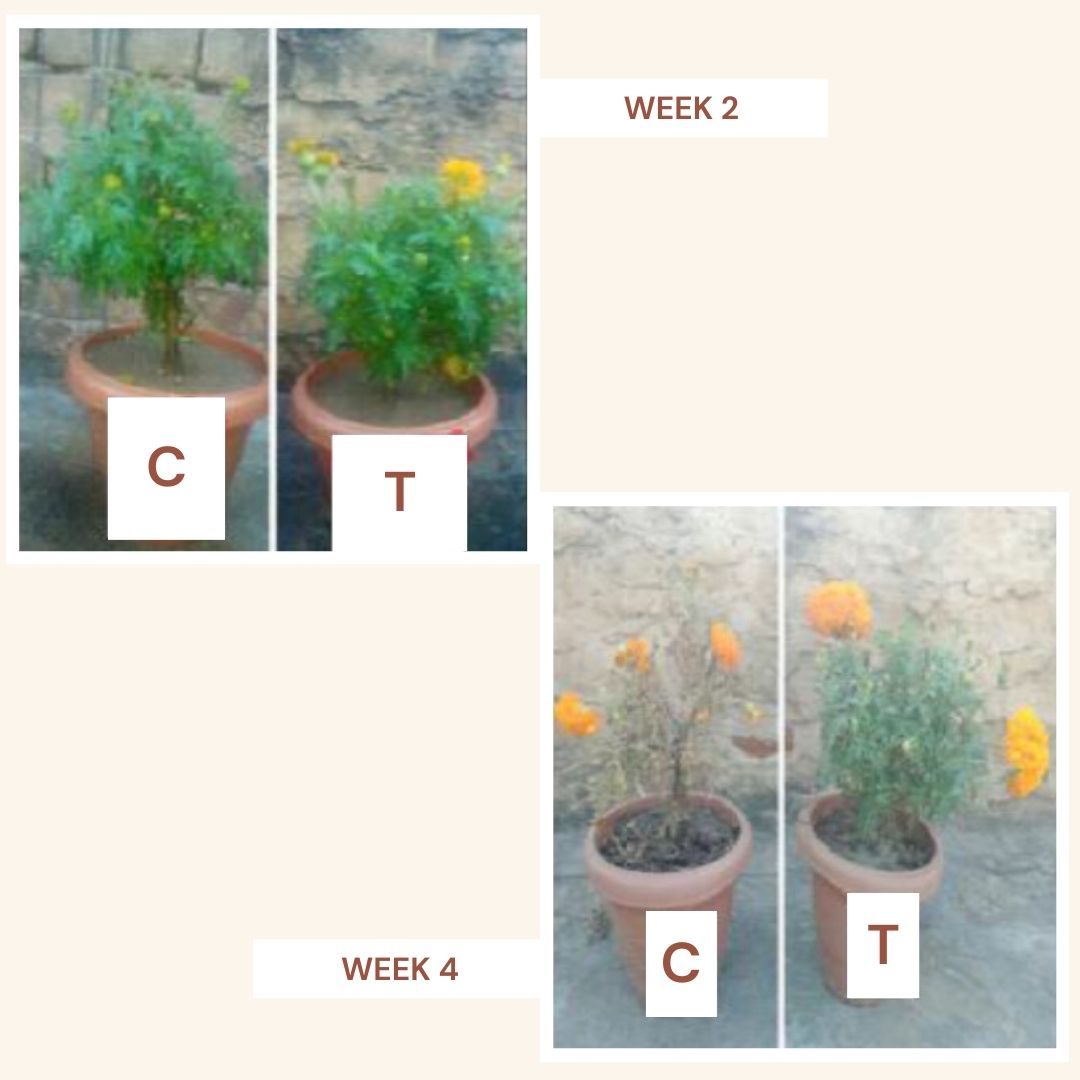
The findings suggest that certain frequencies and sound waves present in music can positively affect the growth of plants, including increased growth rate, improved germination, and increased resistance to disease and pests. For example, classical music with frequencies ranging between 125 Hz to 250 Hz and Indian classical music with a 6-7 Hz frequency were found to have particularly beneficial effects on plant growth.
Above image shows the T (treated) plant with the exposure to low frequency music compared to the C (control) plant which was not exposed to LF music and as you can see is almost dead at week 4.
The study also suggests that the level of hertz (Hz) in music can impact plant growth. For instance, it was found that exposing plants to music with a frequency of 528 Hz led to an increase in the production of chlorophyll and a reduction in the presence of harmful fungi. Additionally, the study highlights that different plant species may respond differently to varying types of music and frequencies.
Overall, the study provides evidence to support the idea that music can have a positive impact on plant growth and development through its influence on frequencies and sound waves. These findings could have practical applications in agriculture and horticulture, particularly in terms of optimizing plant growth and health.
What Sound Frequencies Have Been Used in the Koolá™ Doll?
Four soundtracks have been carefully designed with a specific focus on providing a relaxing and soothing atmosphere intertwined with Solfeggio frequencies and the extra added benefit of alpha and delta sound waves to support deep sleep.
The primary aim of designing the Koolá™ Doll was to promote better sleep for children. However, during the development process, it was observed that integrating Solfeggio frequencies into the soundtracks could offer additional benefits. These frequencies, most notably 528 Hz have been widely studied in the scientific literature for their potential health benefits, which makes it a valuable addition to the Koolá™ Doll’s soundtracks. By including these frequencies, children can also reap the benefits and experience an even more restful and rejuvenating sleep.

Everything is energy and that's all there is to it. Match the frequency of the reality you want and you cannot help but get that reality. It can be no other way. This is not philosophy. This is physics."
- Albert Einstein
Although the four programmed songs in the koala’s music box are very special on their own, the Koolá™ Doll’s most exciting feature is the Sing to Sleep Technology. This feature utilises the soothing and comforting sound of a mother’s voice and her unique sound frequencies which aim to foster a sense of security and calmness in infants, while also promoting positive development of their language and cognitive skills.
We could have created a doll that solely used Sing to Sleep Tech but we thought why not take the doll a step further by incorporating sound therapy and deep sleep stimulation, rendering the sleep aid as a one-of-a-kind product that can provide unparalleled levels of relaxation and rejuvenation. Setting a new standard in the infant sleep aid market.
Learn more about this Australian invented baby sleep toy called the Koolá™ Doll here.
References
Jiang, Y. (2018). A brief history of sound healing. Global Advances in Health and Medicine, 7, 2164956118769552.
Gibson, K., & Barden, J. (2013). Sound healing with the five elements: An ancient oriental therapy for modern times. Inner Traditions/Bear & Co.
Sukovich, J. (2018). The effects of 528 Hz frequency on the human body. In Proceedings of the 4th International Conference on Arts and Humanities (pp. 366-370).
Hanser, S., Hong, M., Camacho, F., & Jonas, W. B. (2013). A systematic review of mind-body interventions for PTSD. Journal of Alternative and Complementary Medicine, 19(3), 224-236.
NASA explores sound therapy to help astronauts manage bone loss,” NASA, June 11, 2018, https://www.nasa.gov/feature/nasa-explores-sound-therapy-to-help-astronauts-manage-bone-loss
Sound Healing Frequencies,” Sound Healing Center, accessed April 19, 2023, https://www.soundhealingcenter.com/frequency/
Cymatics: How Sound Waves Create Geometric Patterns in Water and Why This Matters for Your Health,” Dr. Axe, June 11, 2020, https://draxe.com/health/cymatics/
Water memory: from phenomenology to molecular level,” Journal of Molecular Liquids, Volume 223, September 2016, Pages 43-56, https://doi.org/10.1016/j.molliq.2016.08.052
Fauble, L. (2016). Medicinal Music: An Anatomy of Music in the Healing Arts. Prescott College. ProQuest Dissertations Publishing. Retrieved from https://search.proquest.com/healthcompleteshell/docview/1805610961/abstract/embedded/EJRYH4X5OJ8OEFZD?source=fedsrch
Schnitman, E., & Maria, T. (2013). Sonic Peace: An Antithesis to Sonic Warfare. FIU Electronic Theses and Dissertations, 993. Retrieved from https://digitalcommons.fiu.edu/etd/993
Ivonin, L., Chang, H. M., & Chen, W. (2013). Quantifying and logging something we are not aware of – Personal Ubiquitous Computing Unconscious Emotions, 17(4), 663-673. https://link.springer.com/article/10.1007/s00779-012-0514-5
Barnett, K. T., & Shale, A. J. (2012). Sound healing: A review of the history, principles, and practice. Alternative Therapies in Health and Medicine, 18(4), 16–25.
Hanser, S. B., Thompson, L. W., & Irwin, S. A. (2013). Sound therapies and dementia. American Journal of Alzheimer’s Disease and Other Dementias, 28(7), 693–696.
Haeyoung, L., & Seungtae, K. (2021). Effects of music intervention with 528 Hz frequency on pain management of patients with spinal cord injury. Integrative Medicine Research, 10(3), 100738.
Jafari, Z., Kolb, B. E., Mohseni, M., & Sadeghi, Y. (2016). The effects of low-frequency sound stimulation on patients with anxiety disorders: A pilot study. Journal of Alternative and Complementary Medicine, 22(5), 390–397.
Schnitman, L., & Maria, A. R. (2013). The effects of low-frequency sound stimulation on patients with anxiety and depression: A pilot study. Journal of Medical Systems, 37(6), 9987.
Akimoto, K., Hu, A. L., Yamaguchi, T., & Kobayashi, H. (2018). Effect of 528 Hz Music on the Endocrine System and Autonomic Nervous System. Health, 10, 1159-1170.
N/A. (2018). Solfeggio for Ponder: Solfeggio Scale Effect on the Mind and Body. Retrieved from https://static.secure.website/wscfus/9158863/uploads/Solfeggio_for_Ponder_Final.pdf
Clement, S. (2019). Attuned Vibrations: Solfeggio Frequencies. Retrieved from https://attunedvibrations.com/solfeggio-scale/
Carey, D. (2003). The Great Elixir: Sound Healing, Oriental Medicine and the Three Treasures. California Journal of Oriental Medicine (CJOM). Retrieved from http://search.ebscohost.com/login.aspx?direct=true&db=awh&AN=10070583&site=ehost-live
Jankowiak, K. (2018). Attuned Vibrations: What is a Solfeggio Frequency? Retrieved from https://attunedvibrations.com/solfeggio/
Barnett, J., & Shale, A. (2012). The Integration of Complementary and Alternative Medicine (CAM) Into the Practice of Psychology: A Vision for the Future. American Psychological Association. Retrieved from https://www.apa.org/pubs/journals/features/pro-43-6-576.pdf
Neeraja, P., & Sowmya, A. J. (2015). Effect of music on plants – an overview. International Journal of Science and Research (IJSR), 4(7), 2319-7064.Retrieved from: https://www.researchgate.net/publication/291086163_Effect_of_Music_on_Plants_-_An_Overview
Ekim, A., Armagan, O., Kaya, E., & Karaman, E. (2015). The effect of low-frequency sound stimulation on patients with fibromyalgia: A clinical study. Journal of Back and Musculoskeletal Rehabilitation, 28(4), 719-725. doi: 10.3233/BMR-150624 Retrieved from: https://www.ncbi.nlm.nih.gov/pubmed/25697207
Yeo, J. H., Yoon, S. Y., Kwon, S., Kim, S., Kim, D., Kim, H., & Kim, S. J. (2018). Effects of 528 Hz Music on the Recovery of Patients With Traumatic Brain Injury: A Pilot Study. Journal of Music Therapy, 55(4), 295-304. Retrieved from: https://pubmed.ncbi.nlm.nih.gov/30414050/
Jafari, Z., Kolb, B. E., Mohseni, M., & Bidaki, R. (2016). The effects of 528 Hz music on the reduction of anxiety in patients undergoing coronary angiography: A randomized clinical trial. Journal of Alternative and Complementary Medicine, 22(10), 776-782.
Kim, J., Wigram, T., & Goldsmith, C. H. (2018). The effects of music therapy on Korean hypertensive patients. International Journal of Nursing Practice, 24(4), e12642.
Haeyoung, L., & Seungtae, K. (2021). Effects of music intervention with 528 Hz frequency on pain management of patients with spinal cord injury. Pain Management Nursing, 22(3), 240-245.
Yung, K. K. L., & Wong, T. K. Y. (2021). The effects of sound therapy on stress reduction: A randomized controlled trial. Journal of Holistic Nursing, 39(1), 32-40.
Disclaimer: The information provided in this article is for educational purposes only and should not be considered as medical advice. Always consult with a healthcare professional before making any changes to your health routine or treatment.





